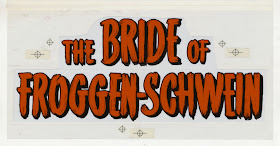My Christmas card from 1977 was printed by letterpress.
The typography was made with Letraset transfer type,
and is from the Kabel family. I glued a candy cane to the
card. Some cards were hand-delivered. To mail the cards,
I constructed, out of foam board, a protective case, then
inserted it in an envelope. Most cards arrived intact. The
image is an enhancement of a slightly faded photograph.
The card measured 4.125 by 6 inches / 10.5 by 15.2
centimeters. Below is the letterpress type block.
Many years later I revised the card design and wording.
I used wood type fonts from Dan X. Solo's Dover books.
The words were pasted, with wax, on a board; on the
left margin I wrote the percentages next to each word.
Then I photostatted each word and pasted them down
on a board. Then the rules and ornaments were added.
Most of the cards were mailed as is, but some cards had
a cellophane-wrapped candy cane stapled to the card. The
card measured 3.5 by 9 inches / 8.9 by 22.9 centimeters.
(Next post on Sunday)





















































